Ore sorting upgrades North of 60 mines
From creating direct shipping rare earths and copper ore in Canada's North to squeezing extra gold out of an Alaska mine North of 60 Mining News – August 5, 2022
Last updated 9/3/2022 at 11:29am

Cheetah Resources/billbradenphoto
Yellowknives Dene Drummers perform on the catwalk of the Tomra ore sorter ahead of the first bag of rare earths concentrates produced at Nechalacho in July 2021.
"Grade is king" is an adage that guides mineral exploration and mining. The premise behind this basic axiom of the mining business is the less ore that needs to be mined and processed per ounce of precious metals, pound of base metals, kilogram of critical minerals, or carat of gemstones produced, the more profitable an operation will be. The kingliest of orebodies would be of such high grade that a mining company would simply need to dig up the ore, crush it, and then ship it to market.
One such royal rare earths mine is currently operating in Canada's Northwest Territories, and a similar regal copper mine is being considered for the neighboring territory of Nunavut thanks to an elevation in status made possible by ore sorting.
Originally developed in the 1930s to automate the industrial-scale sorting of fruits, vegetables, and other agricultural goods, early sorters used cameras to separate the wheat from the chaff, so to speak, by color. An apple sorter, for example, would identify and automatically separate yellow or green apples from the delicious reds bound for supermarket produce sections.
As sensing technologies have become more sophisticated, so too have the capabilities of sorting machines. With the advanced sensors available today, sorting technology has emerged as a particularly useful tool for the recycling and mining industries.
The ore sorter increasingly being adopted by the mining sector utilizes various sensors to scan every rock being transported along a conveyor belt for unique physical or chemical signatures and uses jets of high-pressure air to blast low-grade or no-grade rocks into a reject chute – a quick, easy, and cost-effective way to upgrade the ore.
This tech works so well that some companies in Canada's North are foregoing all other processing equipment for an ore sorter that converts mined ore into concentrates that can be shipped to refineries or processing facilities – eliminating the expense, complicated permitting, and environmental footprint associated with traditional ore processing and tailings storage facilities.
Ore sorting is also being used to get the most gold out of one currently operating mine in Alaska and is being considered as a means to upgrade zinc and gold orebodies at future mines in the North of 60 Mining News area.
Sorting rare earth in NWT
Ore sorting technology has proven to be so useful to mining that Canada would likely not be a rare earths producing nation today without it.
Vital Metals Ltd.'s Nechalacho Mine in Northwest Territories, the first and only rare earths operation in Canada, utilizes sorting technology to upgrade ore mined from near-surface deposits to a concentrate that is being shipped to Saskatchewan for further processing.
While Nechalacho was already high on the queue to be Canada's first rare earths mine, Vital would likely still be working to gain the permits, social licenses, and funding required to build a more complex and costlier traditional mine with a much larger environmental footprint.
Instead, the Australia-based mining company decided to incorporate an ore sorter into a mining operation that is more akin to a sand and gravel quarry than the traditional rare earths mine.
As a result, Vital began producing its first rare earth concentrates at Nechalacho last summer, only two years after initiating its strategy to leverage ore sorting technology to quickly establish a mine at this northern project with pockets of high-grade rare earths ore associated with much larger deposits of this suite of 15 elements critical to electric vehicles, wind turbines, and a wide array of other modern devices.
North T, the first deposit being mined at Nechalacho, hosts 105,000 metric tons of resources averaging 8.9% total rare earth oxide. This is an order of magnitude higher grade than most REE deposits, which tend to average around 1% TREO or less.
Vital contracted Nahanni Construction, a Northwest Territories-based dirt moving company majority-owned by the Yellowknives Dene First Nation, to mine the high-grade rare earth ore at Nechalacho.
"We are developing Nechalacho using the most sustainable methods possible, which includes the use of local labor so that we can support the communities surrounding our project," said Vital Metals Managing Director Geoff Atkins.
The ore mined by Nahanni is being crushed, screened, and then fed into a Tomra ore sorter that separates the bastnaesite rare earths mineralization from the quartz waste rock in the deposit.
While the rare earths mineral is distinctly red and the quartz is milky white, color did not prove to be the best ore sorting technique at Nechalacho. Instead, the Tomra sorter is equipped with X-ray transmission (XRT) technology to sense the significant differences in atomic density between bastnaesite and quartz.
By eliminating the lighter quartz, this sorter upgrades the ore mined at North T to a concentrate with greater than 30% rare earth oxides with the need for little or no water and zero chemicals.
"Mining is changing. While sorter technology is widely used in diamond mining, this is the first time that sensor-based sorting has been used as a single step to produce a metal ore concentrate. It is much more environmentally friendly," said Tomra engineer Russell Tjossem, who trained members of the Yellowknives First Nation to operate the sorter.
Sort and ship Storm copper
Vital may be the first but is not the only Australia-based company considering the use of ore sorting technology to produce direct shipping ore from a mine in Canada's North.
American West Metals Ltd. is investigating the potential of establishing a similar type of mine to produce copper concentrates at the Storm Copper project in Nunavut.
Located on Somerset Island, which lies along the Northwest Passage in Nunavut's northern reaches, Storm hosts near-surface zones of high-grade copper mineralization.
American West, which optioned Storm and the neighboring high-grade Seal Zinc project from Aston Bay Holdings Ltd. early last year, is investigating the potential of using ore sorting technology to produce direct shipping ore.
The company sent a 5.5-kilogram (12 pounds) sample of material from previous drilling to Australia to be tested with a Steinert ore sorter.
Using a combination of XRT and 3D laser sensors, the ore sorter produced a commercial-grade direct shipping ore product averaging 53.9% copper.
American West says these results demonstrate that ore sorting offers an excellent option to produce high-quality copper concentrates at Storm that sidesteps the high costs and environmental, social, and governance considerations of developing a full-scale copper processing facility in Canada's high arctic.
"The process of generating DSO at Storm is amazingly simple and highlights our company's focus on generating ESG sensitive mining solutions," said American West Metals Managing Director Dave O'Neill. "Storm Copper now stands out as one of the very few, and highest-grade DSO copper projects globally."
Given the promising ore sorting results, the Australian exploration company is focusing its exploration at Storm on outlining deposits of near-surface, high-grade copper mineralization that could be upgraded to direct shipping copper ore.
In July, American West reported that visual geological observations indicate that the first two holes drilled at Storm cut extensive zones of the near-surface copper sulfide mineralization that the company hopes to feed through a future ore sorter.
"The results from these holes are significant as they show strong continuity between the thick historical copper intersections at the 2750N Zone where we are aiming to define a shallow, high-grade copper resource that can support a low-footprint direct shipping ore mining proposal," said O'Neill.
Major gold upgrade in Alaska
While an inexpensive and environmentally sound means of upgrading rare earths or copper ore to a high-grade product ready to be shipped out of the Canadian Arctic demonstrates the game-changing potential of sorting technology, upgrading ore ahead of traditional processing will likely be the biggest role for ore sorters.
Nova Minerals Ltd., which also happens to be an Australia-based mining company, is considering the use of sorting to increase the grade of ore processed through the mill and recovery circuit at the Korbel gold project on its Estelle property in Alaska.
The enormous Korbel deposit hosts a total of 286 metric tons of indicated resource averaging 0.3 grams per metric ton (3 million ounces) gold, plus 583 million metric tons of inferred resource averaging 0.3 g/t (5.1 million oz) gold.
While the grades are not kingly, the gold is not evenly dispersed throughout the rock, which is advantageous for the use of dual-energy XRT sorting technology.
"This deposit has a majority of its gold contained in discrete high-grade sheeted vein rocks which are easily concentrated with existing DE-XRT ore sorting technologies," said Brent Hilscher, vice president of mineral processing at ABH Engineering, which carried out ore sorting tests on Korbel material. "Once concentrated, we have several options to achieve higher gold recovery at a very low overall cost."
A 588-kilogram (1,296 lb) sample of Korbel material averaging 0.67 g/t gold was run through a Tomra XRT sorter in stages. During the first stage, the sorting machine upgraded the material to 6.1 g/t gold in about 4% of the original mass but only captured around 36% of the total gold in the sample. During the second run, the grade was 3.4 g/t gold in about 15% of the original mass while capturing 74% of the gold. During the third run, the grade was 2.1 g/t gold in 26% of the original mass while capturing 82% of the gold. During the final run, the grade was 1.3 g/t gold in 46% of the original mass while capturing 90% of the gold.
"Significant increases in mine productivity could be achieved through the rejection of a considerable proportion of lower grade rock before processing," said Nova Minerals CEO Christopher Gerteisen. "By using an XRT sorter, we would prospectively reduce the volume of ore and lift the grade appreciably, rejecting lower grade material ahead of the milling and processing circuit. This would minimize energy requirements, tailings generation, and would lower processing costs overall."
A scoping study published earlier this year further confirmed this strategy. According to this "snapshot in time" assessment, an ore sorter would upgrade 195 million metric tons of ore mined from the Korbel Main deposit from 0.41 g/t to 0.7 g/t gold before being fed into the mill.
Nova says the scoping study provides a solid foundation for advancing prefeasibility level studies that is expected to also consider the inclusion of higher-grade gold mineralization identified at RPM, an early staged deposit about 16 miles (25 kilometers) south of Korbel.
According to a late 2021 calculation, which only includes the results from seven holes, RPM hosts 23.1 million metric tons of inferred resource averaging 2 g/t (1.5 million ounces) gold.
Despite already being six times higher grade than Korbel, Nova may find it beneficial to use ore sorting to upgrade RPM ore before trucking it north to a central processing facility currently anticipated to be located near the larger Korbel deposit.
More zinc, less trucking
The idea of upgrading ore before shipping it to a central processing facility is definitely something Osisko Metals Inc. is considering for its Pine Point zinc-lead-silver mine in Northwest Territories.
The zinc mineralization at Pine Point is found in 47 smaller deposits spread out along a roughly 30-mile- (50 kilometers) long trend. This means that much of the ore would need to be transported a considerable distance to a central processing facility on the property.
To cut down on trucking expenses, Osisko plans to use sorters to eliminate unmineralized material at the various pits.
Initial tests carried out by Steinert in 2019 found that nearly half of the material could be rejected as waste while retaining more than 90% of the zinc and lead.
"The benefits of incorporating a pre-concentration process at Pine Point would be to significantly reduce haulage costs and reduce the material throughput in the mill. Based on the combination of these benefits, project economics would improve from substantial operating and capital cost savings," Osisko Metals President Jeff Hussey said at the time.
Further tests validated these initial findings, and a preliminary economic assessment completed earlier this year showed that an XRT-based mineral sorting system that would reject 40% of the material as waste while retaining 93.4% of the zinc and 99% of the lead.
In addition to saving on trucking costs, ore sorting will reduce the mine tailing produced at Pine Point, which would be placed into pits from historical mining on the property and covered with clean materials. This plan would both handle all the new tailings produced and reclaim areas previously mined – a double win for the environmental footprint of the proposed new era mine at Pine Point.
Unique sorting at Kensington
Coeur Mining Inc. has found a unique way of using ore sorting technology at its Kensington gold mine in Southeast Alaska.
Instead of rejecting waste at the front-end, the Tomra XRT ore sorter is reintroducing gold skimmed off into a waste pile back into the circuit.
Going into 2022, Kensington hosted 1.35 million metric tons of proven and probable reserves averaging 0.194 oz/t (1.08 million oz) gold.
To increase the efficiency of the mill at this high-grade underground gold mine, hard granite pebbles are skimmed off. While this granite is less mineralized, some of the pebbles do contain gold with grades higher than the Kensington reserves.
A pilot of the sorting technology completed at Kensington at the end of 2013 recovered 65% of the high-grade pebbles in about 10% of the rejected material. As a result, this test-sorting produced a pile of pebbles averaging 0.3 oz/ton gold.
Based on the results, Coeur installed a Tomra XRT sorter at Kensington in 2015 to feed gold-bearing pebbles from the skimmed material back into the recovery circuit.
Through the end of 2021, the ore sorter has recycled 18,492 tons of ore containing 4,216 oz of gold back into the circuit at Kensington.
Given this success, Coeur is carrying out studies on another innovative use for ore sorting – applying this technology to transforming lower-grade gold mineralization being dug through during underground development into another high-grade source of ore for the mill. In essence, monetizing rock with grades too low to economically run through the mill as a whole but must be excavated to reach the payable orebodies – potentially upgrading peasant waste material to kingly ore at Kensington.










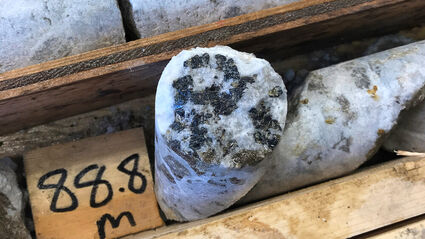

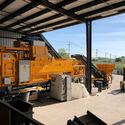
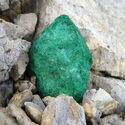
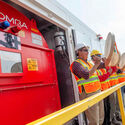
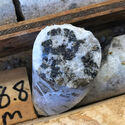
Reader Comments(0)